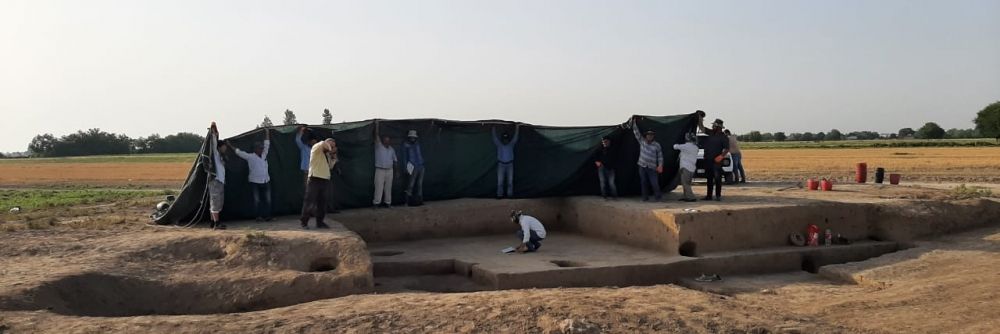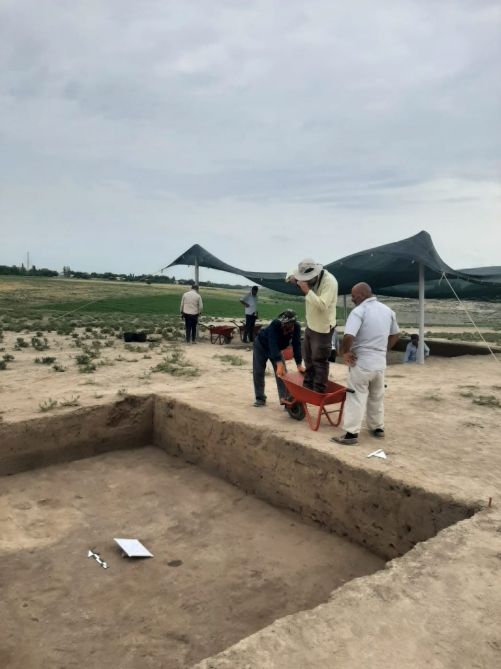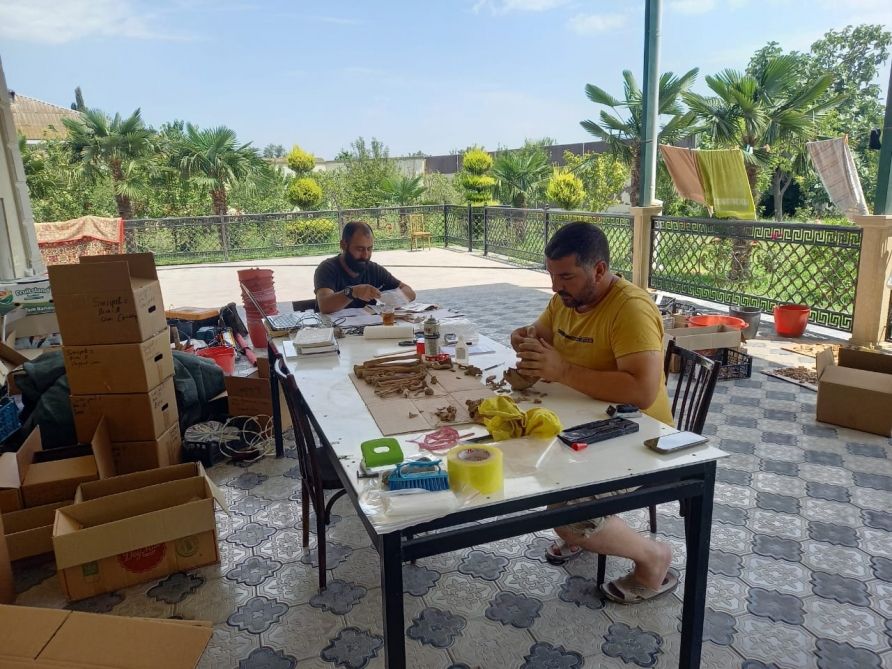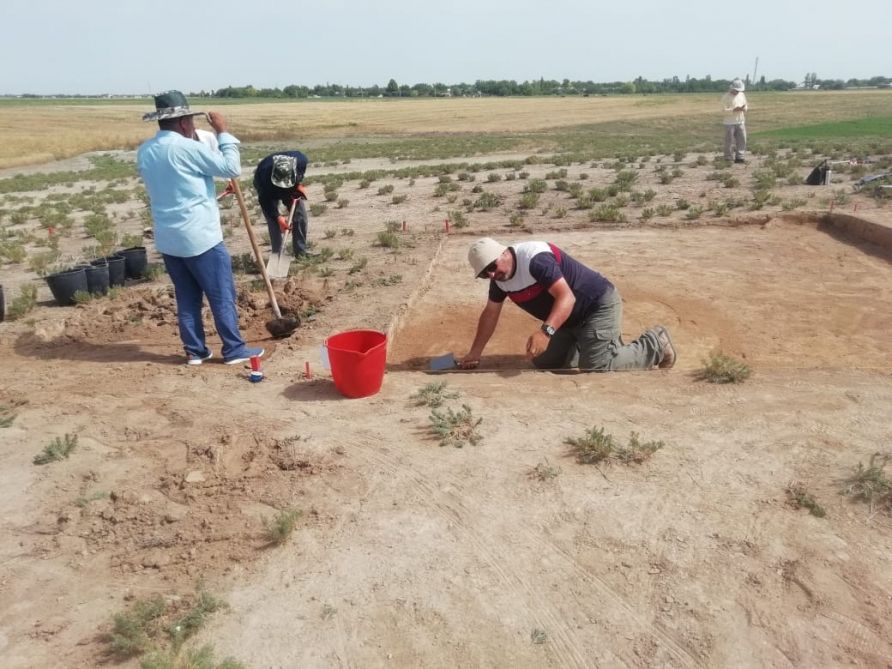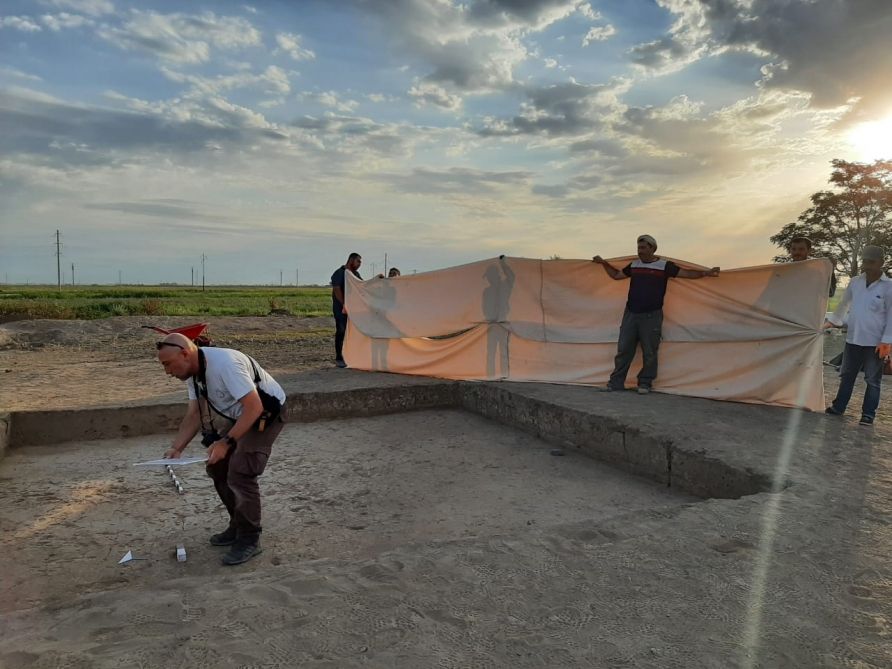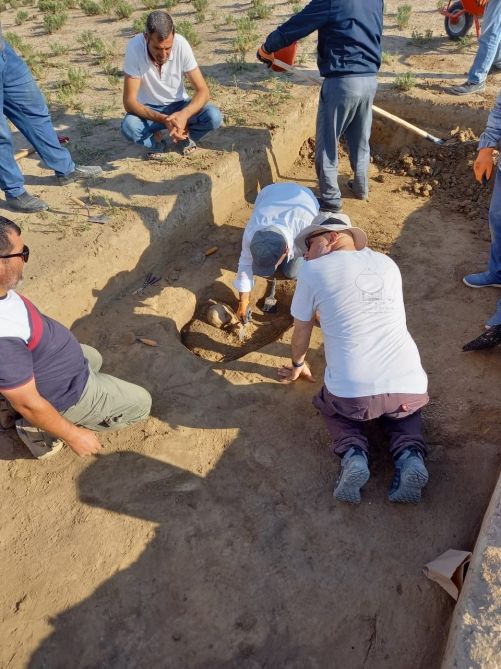Azerbaijani-German expedition conduct joint archaeological research in plain Karabakh [PHOTO]
![Azerbaijani-German expedition conduct joint archaeological research in plain Karabakh [PHOTO]](https://www.azernews.az/media/2022/07/07/ar1.jpg)
By Vugar Khalilov
The Archaeology, Ethnography and Anthropology Institute of the Azerbaijan National Academy of Sciences (ANAS) and the German Institute of Archeology have started large-scale archaeological research in Karabakh, Azernews reports.
The research is being conducted in line with the agreement signed between the two agencies within the framework of the project called "Archaeological research on the plain Karabakh".
According to the institution, the major purpose of the project is to conduct an archaeological study on settlements from the 6th-4th millennia BC in the plain Karabakh . The first focus was on the study of towns associated with the Lalatapa phenomenon of the 4th millennium BC.
Some 13 monuments associated with the Lalatapa phenomenon on the Karabakh Plain were evaluated, and an archaeological study was conducted on four of them during the 2022 research season, namely the Janavartapa, Sarijali No. 2, Lalatapa, and Farmantapa settlements. Topographic measurements were carried out in these monuments, and 3D models were created based on their drone footage.
The remains of three excavated buildings built from a single seal, as well as a large number of material-cultural samples reflecting the cultural-economic and economic life of the period, were discovered during archaeological excavations in the Janavartapa settlement (Taynag village of Agjabadi region). This monument is currently undergoing research.
Sarijali settlement No. 2 (Sarijali village, Agjabadi region) is less than one meter tall and the monument is in shambles. Archaeological excavations were conducted in three sites, and it was discovered that the debris had obliterated the majority of the cultural layer. In the 30-40 centimeter part of the site that remained, no building traces were found. A few ceramic fragments were discovered, and excavation work on the monument has been concluded.
The archaeological excavations at Lalatapa settlement (Eyvazli village, Agdam region), the namesake monument of the ethnocultural phenomena, were restored after 32 years. Initially, excavation squares were identified and archaeological excavations were carried out in the monument's northern section.
The archaeological investigation will include a study of the settlements in their geographical and ecological context, as well as a full description of the material culture of the Lalatapa-type towns.
The farm complexes belonging to the Lalatapa phenomenon have never been studied, and the anthropological analysis of its material culture is still controversial. The research aims to solve this problem using an integrative approach.
---
Follow us on Twitter @AzerNewsAz
Here we are to serve you with news right now. It does not cost much, but worth your attention.
Choose to support open, independent, quality journalism and subscribe on a monthly basis.
By subscribing to our online newspaper, you can have full digital access to all news, analysis, and much more.
You can also follow AzerNEWS on Twitter @AzerNewsAz or Facebook @AzerNewsNewspaper
Thank you!

